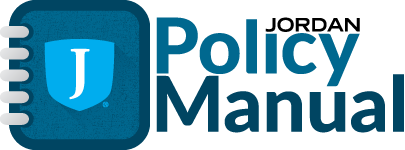- Effective - 3/28/2017
- Board Directive
Educational institutions are potential high-risk areas for transmission of vaccine-preventable diseases. While immunization is an important health requirement for students in District schools, it is equally important for staff in these settings and other District buildings to be protected against vaccine-preventable diseases. This policy is adopted in conformance with the Salt Lake County Health Department’s (health department) Health Regulation #38. The Board delegates to the District Administration the responsibility for developing and administrating the policy for employee immunizations. - Administrative Policy
- Purpose
Utah law provides the health department, in the event of a case or an outbreak of a vaccine-preventable disease among District students or employees, with the authority to exclude from school and the workplace all susceptible persons, including students and employees, to prevent the spread of a communicable disease and to protect the public’s health. This policy is adopted to facilitate the timely identification of employees who must be excluded and to outline the details of their employment status during the period of exclusion. - Record of Immunization
All employees are encouraged to maintain a record of immunization or immunity against the diseases listed in Section C for ready access in the event of an outbreak. In the event of an outbreak, District nurses will act as a liaison between the health department, school administration and impacted employee(s) who will be required to provide their record of immunization. Employees with no record on file, or whose record does not indicate immunization against the disease identified in an outbreak, may be excluded from the school or workplace until authorized by the local health department to return. - Recommended Vaccinations
The District will provide policy notification to employees during the new hire onboarding process and each year during the critical policy review. In accordance with the recommendation of the Utah Department of Health, all employees are encouraged to be vaccinated against the following:- Measles, Mumps, Rubella (MMR) – Employees born in or after 1957 must provide documentation of two (2) doses of the MMR administered at least one month apart, or proof of immunity.
- Tetanus, Diphtheria, Pertussis (Tdap) – Employees must provide documentation of one (1) dose of the Tdap.
- Varicella (Chicken Pox) – Employees must provide documentation of receiving two (2) doses of Varicella vaccine at least four (4) weeks apart or a physician diagnosis or personal recall of Varicella disease or proof of immunity.
- Exemptions
Except as otherwise provided, employees may claim an exemption to an immunization for 1) medical; 2) religious; or 3) personal reason(s), as allowed by Utah Code §53G-9-303. Each exemption claimed must be accompanied by the appropriate authorized health department exemption form. - Exclusion
When the local health department verifies that a case or an outbreak of a disease listed in Section C has been identified at a school or other District location, the health department has the authority to exclude individuals from the workplace it determines pose a risk to the public health. Administrators should cooperate with health department personnel and District nurses to request records of immunization. If the health department determines that an employee must be excluded, the health department official or District nurse shall notify the school/building administrator and the Administrator of Human Resources. The District will take action according to the following provisions:- Communication with health department.
In the event an employee is excluded, school/building administrators and other District administrators shall communicate with health department officials regarding such issues as schedules, activities, and other information to mitigate the exclusion from unnecessarily disrupting school/building operation. - Excluded with a personal, medical or religious exemption form.
- An employee who is excluded because the employee submitted a properly authorized exemption form shall be allowed to use his/her available leave as allowed by policy during the time of exclusion.
- If a substitute teacher is needed, the District will cover the cost of the substitute during the time of exclusion.
- Excluded with no immunization/immunity record or exemption form.
- An employee who is excluded because the employee has been unable to provide a record of immunization/immunity or has not submitted a properly authorized exemption form shall be allowed to use his/her available leave as allowed by policy during the time of exclusion if the exclusion for an outbreak occurs before July 1, 2018.
- If the exclusion for an outbreak occurs after June 30, 2018, the excluded employee shall not be allowed to use his/her available leave as allowed by policy, with the exception of Vacation or Personal Leave, during the time of exclusion.
- If no Vacation or Personal Leave is available, the employee will be placed on unpaid administrative leave during the time of exclusion.
- This unpaid leave will not count towards the 15 day leave of absence limit set forth in DP337 NEG or DP337B NEG.
- If a substitute teacher is needed, the District will cover the cost of the substitute during the time of exclusion.
- Communication with health department.
- Purpose
